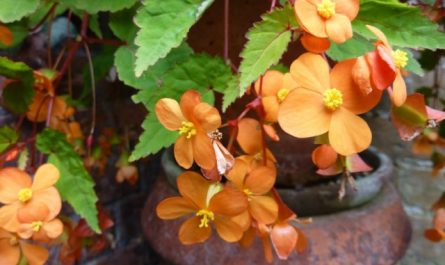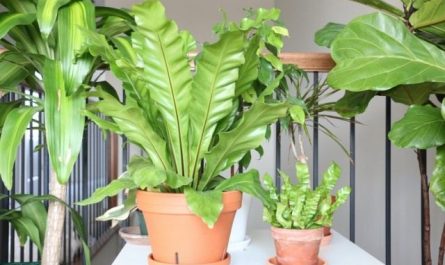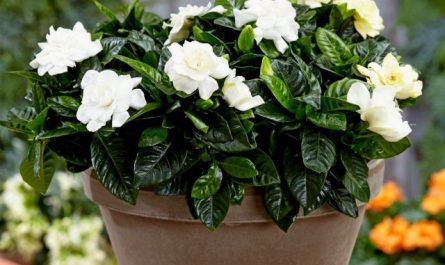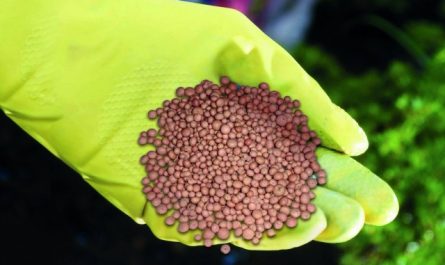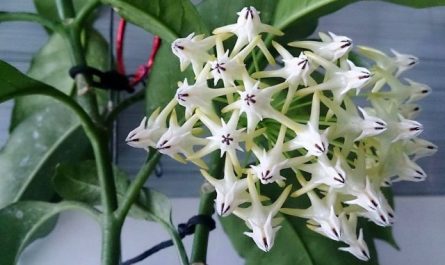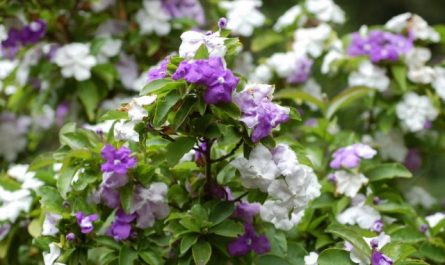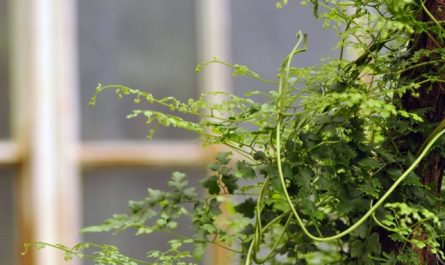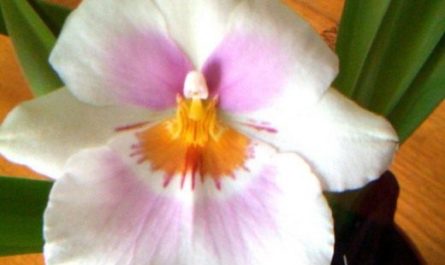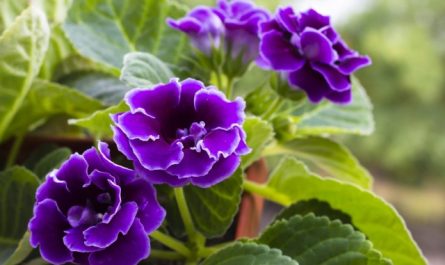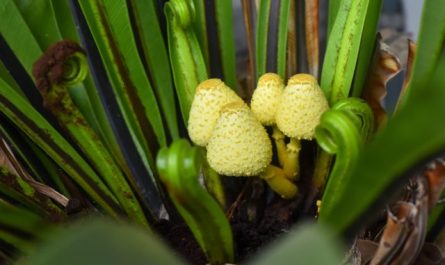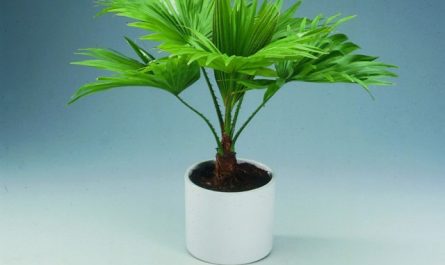A relatively new plant for us, rapidly gaining popularity, anigozanthos belongs to the crops that can bloom amazingly long. “Kangaroo paws” is an Australian exotic, the inflorescences of which look more than unusual. Lush clumps of narrow leaves and unusual inflorescences of curved bright “tubes” fully compensate for all the difficulties with growing. And although this is one of the most difficult to care for indoor crops, which is more suitable for experienced gardeners, it is difficult to compete with it in terms of effectiveness. After all, in any collection, anigozanthos will easily become a star of the first magnitude.

Australian Charm of Exotic Anigozanthos
Among indoor exotics, kangaroo paws occupy a special place. They captivate with a combination of exotic flowering with beautiful greenery, always look irresistible and easily fit into any interior. One of the unique abilities of anigozanthos is the ability to visually expand space, as if filling it with a sense of freedom and lightness. At first glance, it seems like an exotic exotic. Kangaroo paws are not only a beautiful flowering indoor plant, but also a magnificent cut flower.
Anigozanthos (or anigozanthus), sometimes distributed under the name of anigosa, is a fairly large plant in nature, the shoots and leaves of which can grow up to 2 meters. In indoor culture, anigozanthos are limited to 30-50 cm in height. The rhizome is tuberous, powerful. The leaves of anigozanthos are located in a dense rosette, while the plant grows strongly and forms a solid thick turf. Belt-shaped or lanceolate leaves are somewhat reminiscent of cereals, but are tougher.
Flower-bearing shoots of anigozanthos emerge from the center of the rosettes, crowned with panicle-shaped inflorescences with tubular, curved flowers collected in bunches. Tightly closed, they seem more like “sticks”. But when they open, surprisingly delicate, star-like flowers suddenly appear to the eye. Moreover, in the broom, all six teeth are shifted to one side and differ from each other in size.
The pubescence on the flowers of the anigozanthos and the peduncle gives the plant a special originality. It is this that gives the flowers their bright, unusual color; the colored thin hairs seem to be artificial spraying. The inflorescences-combs outwardly really resemble kangaroo paws, thanks to which the plant received its popular nicknames.
Anigozanthos bloom in spring and summer. Anigozanthos has forms and varieties with a wide variety of colors. Varieties with red-green, red-yellow and orange flowers offer variations of the fiery color scheme.



Anigozanthos species
Although each of the 12 species of Anigozanthos is beautiful in its own way, dwarf hybrids are more common in indoor culture. Anigozanthos squatus (Antigozanthos humilis) (also called Anigozanthos scaly, or Cat’s Paw), and not species plants. The exceptions are:
- Anigozanthos lutea (anigozanthos flavidus), a spreading, powerful perennial with swamp-colored leaves and powerful panicles-combs of inflorescences, consisting of 9-10 tubular flowers of either light green or terracotta shades;
- anigozanthos pretty (The most beautiful anigozanthos), a plant with soft pubescence on silvery leaves, branched panicles with yellow flowers that seem velvety-fluffy;
- Anigozanthos bicolor (anigozanthos bicolor), the clumps of which are unusually slender (the diameter is half the height), the leaves are decorated with small thorns along the edge, and the brushes of red-green flowers with bright cherry and turquoise tones of the lobes surprise with their exotic variegation;
- Anigozanthos rufosa (anigozanthos rufus) with more emerald and rough leaves, large panicles of inflorescences consisting of up to 15 flowers of scarlet or purple color; graceful, more delicate and “floating” appearance.
It is even rarer Anigozanthos Mangleza (anigozanthos Manglesii) is a capricious species prone to rapid degeneration, blooming in winter with light green flowers and distinguished by the reddish color of its shoots.
In regions with mild winters, anigozanthos can be grown not only as a houseplant, but also as a garden plant. But even in countries with severe winters, kangaroo paws can be considered as a garden crop that requires wintering indoors. It is not afraid of short-term light frosts, withstanding drops to -5 °C. Selecting conditions for the plant is not as difficult as caring for it, although the need to ensure a cool wintering is very important.
Lighting for Anigozanthos
Kangaroo paws are one of the most light-loving plants. It is better to place it not just in light, but in sunny locations. Anigozanthos will not bloom, will not reveal its beauty even with light shading, quickly loses compactness and stretches out. It is especially difficult to provide the necessary lighting during the dormant period. After all, in late autumn and winter, anigozanthos will still need the same bright lighting as in summer.
Southern windowsills are good for anigozanthos. It responds well to artificial lighting.

Anigozanthos care
Temperature conditions
This is not just a heat-loving plant, but a heat-resistant one. During the period of active growth, especially in summer, anigozanthos will feel good both in the usual room range from 18 to 23 degrees Celsius, and when temperatures exceed 25-28 degrees. During the dormant period, anigozanthos should be kept cool. From October to February, this Australian plant needs constant air temperatures from 10 to 15 degrees Celsius. A decrease in temperature should not affect the lighting: it is maintained constant, quite bright.
Despite all its capriciousness, anigozanthos can be taken out into the open air in summer. It will do well both on the balcony and in the garden. But you need to place the plant in a place protected from precipitation and drafts.

Watering and air humidity for anigozanthos
Anigozanthos are moisture-loving plants. During the active growth period, this exotic plant needs very high substrate humidity, it is watered abundantly, not allowing the soil to dry out. Anigozanthos does not tolerate complete drying of the soil. But at the same time, the plant is no less afraid of stagnant water and waterlogging. Watering the plant has another specificity: anigozanthos is afraid of wetting the bases of the leaves, it is better to water it from below, and not using the classic method.
During wintering in cool conditions, watering of anigozanthos should become more scarce, but it should not be stopped completely and the substrate should not be allowed to dry out even in the cold.
Kangaroo paws are not sensitive to air humidity, they tolerate a dry environment well even in winter. But the greenery of the plant only becomes more beautiful from periodic spraying. It is important to use fine sprayers for kangaroo paws, do not allow moisture to accumulate. Spraying of anigozanthos can only be done if the air temperature is not below 20 degrees Celsius.

Fertilizers for Anigozanthos
Fertilizers for kangaroo paw are applied frequently during the active period. The optimal frequency is once every 1 weeks, but using moderate, halved doses of fertilizers. Complex universal fertilizers are perfect for anigozanthos.
Fertilizers for anigozanthos should be stopped a month or a month and a half before the start of the dormant period, gradually reducing the doses by September and stopping completely. From September to February, fertilizers are not applied.
Pruning Anigozanthos
In order for kangaroo paws to bloom almost tirelessly, it is necessary to promptly remove faded flower stalks and not allow the flowers to completely wither and the beginning of fruit setting.
Anigozanthos flowers are great in a bouquet. They can also be cut for drying, because the kangaroo paws’ inflorescences retain their color perfectly when dried correctly in a shaded place.

Anigozanthos transplant, containers and substrate
One of the disadvantages of Anigozanthos is the requirement for planting in fairly large containers. It is more often grown in tubs or boxes than in regular flowerpots. The main condition is the availability of free space for the constant increase in the volume of the clump, the release of new rosettes.
The same feature is connected with the need to transplant only when necessary, and not with a certain frequency. Anigozanthos are transferred to new containers, dividing the bushes or increasing the volume of the container only when the old pots become cramped.
Anigozanthos should be replanted as early as possible. It is advisable to carry out the procedure before the anigozanthos starts growing, in February. The last time for replanting is the first ten days of March.
The substrate for the plant should be light, permeable, very loose. It should minimize the risk of water stagnation. The addition of crushed bark is considered mandatory for anigozanthos. Standard substrates for indoor plants can be used for the plant. The reaction should be neutral. Very thick drainage is placed at the bottom of the pot, with a minimum height of 5-6 cm.
Diseases and pests of anigozanthos
The greatest danger of pest infestation for anigozanthos is the wintering period. During the dormant period, kangaroo paws are very sensitive to felt, spider mites and aphids. Overwatering, as well as classic watering with careless soaking of the base of the leaves causes the spread of rot, which manifests itself in blackening of the foliage. It is better to transplant the plant immediately, resorting to division and removal of damaged parts of the rhizome.
When taking the plant out into the fresh air, you need to keep an eye on it, because anigozanthos is very attractive to slugs and snails.

Common problems in growing Anigozanthos:
- loss of compact shape, stretching under strong shading;
- poor flowering in low light conditions;
- lack of flowering during warm wintering.
Methods of reproduction of anigozanthos:
Seeds
They are rooted according to the usual scheme, sowing in a nutritious light substrate and only slightly covering with soil. In warmth, in good light and under film or glass, anigozanthos sprout quite well, but it is difficult to bring the seedlings to adult plants. Seed sowing can be carried out almost throughout the year. Picking is carried out after the release of the fourth true leaf. It is best to use fresh seeds, they sprout within 2-4 weeks.
Dividing the curtains
When replanting, large plants can be divided into several smaller sods. Anigozanthos has such a dense structure and powerful root tubers that it is better to divide it with a knife, cutting the sod into pieces. When dividing, it is better to cut off the leaves: this way, the anigozanthos will adapt faster and recover well. The cuts must be treated with charcoal.
After division, the plant is watered only from below, very moderately, and the containers are not placed in the usual place, but in partial shade or shade. In general, adaptation after division takes 2-3 weeks. Only after the kangaroo paws begin to release new leaves, they can be exposed to the usual bright light.
